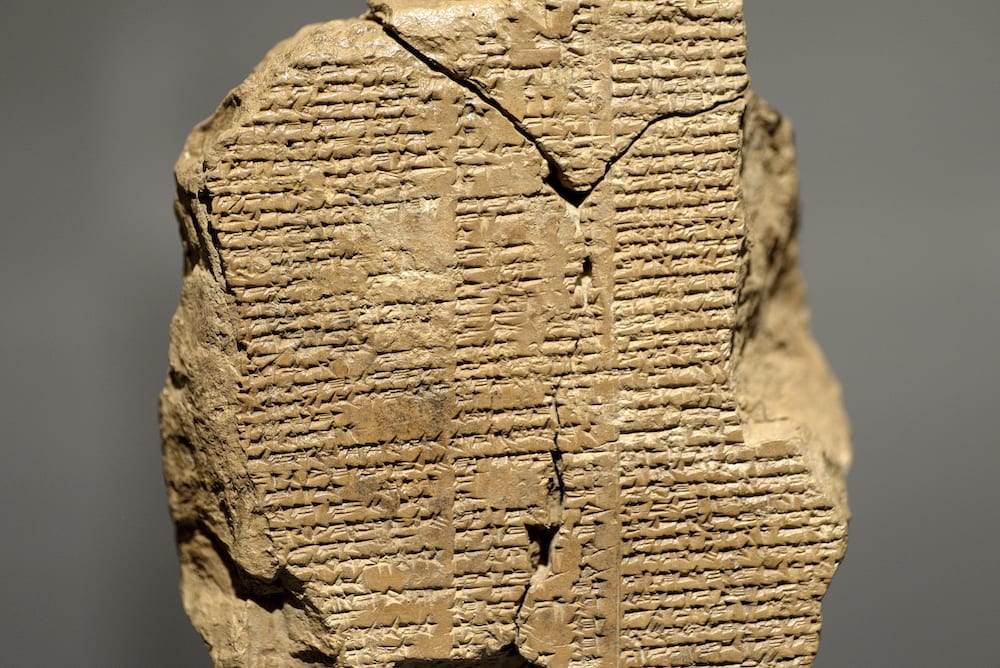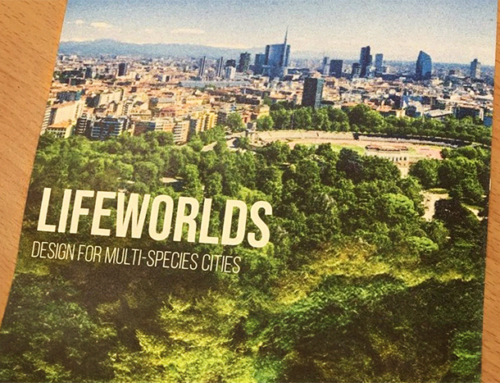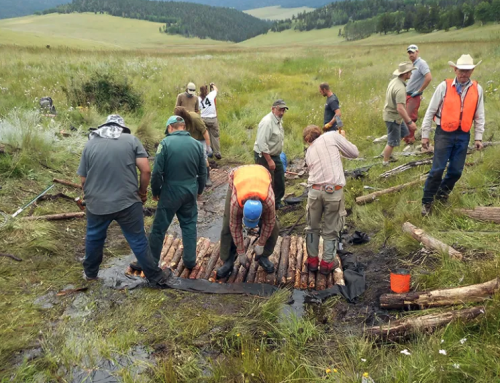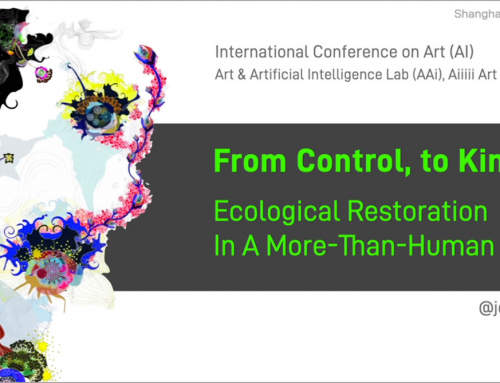Alastair McIntosh reminds us here that the World’s oldest book, the Epic of Gilgamesh, portrayed tension between the wild and the civilised. The Buddha taught the interconnection of all things. Plato depicted the world as being “a living god”.
c. 2,750 BCE: The World’s oldest book, the Epic of Gilgamesh, portrays tension between the wild and the civilised in its hero, who violates the Goddess’ wishes by felling an ancient cedar forest but in consequence suffers “death” of his wild side.
500 BCE: The Upanishads, Bhagavad Gita and Buddha taught the interconnection of all things – “mutual interdependence.” Old Testaments prophets warned of ecocide (e.g. Isaiah 24) and laid out a land ethic (e.g. Leviticus 25).
300 BCE: Plato’s Timaeus (110-111) depict the ecological degradation of ancient Greece in terms that display advanced understanding. He goes on to depict the world as being “a living god” created by God eternal. Plato, however, sets reason above feeling, presents God as male in preference to female, and presumes a dualistic worldview.
33 CE: A Hebrew prophet turns recriminative violence on its head, predicating heart and hand over mere cleverness of head.
570-632 CE: Prophet Mohammed establishes Islam embodying concern for social and ecological justice (including giving rights of education, property ownership, etc. to women). The story of the thirsty dog at the well illustrates that compassion for animals mattered more than the perceived sin of adultery. Islam retains a lunar calendar. Meanwhile, in Europe, Rome has fallen and the “Dark Ages” are in full swing, but with philosophy and theology flourishing in the Islamic and Celtic worlds.
1255-1274 CE: Thomas Aquinas (and the Scholastics) reintegrate Greek rationalism (conserved by Islamic scholars) with Christianity – the start of the “Renaissance” (or rebirth) of Greco-Roman Classical thought during the late “Middle Ages.” Feudalism morphs to early modernity, and European nation states consolidate, governed by cross and sword, and directed by the compass laying the ground for later empires.
1560: The Reformation (Scotland’s date). Salvation a question of individual righteousness and not a matter controlled by the spiritual community (“church”). John Calvin “accommodates” usury = deferred gratification. Economy freed from church.
1603 CE: Advent of early modernism as the “father of modern science,” Francis Bacon, chancellor to King James VI & I, anticipates biotechnology and suggests nature’s secrets should be prised out of her like confessions are tortured from witches. Decartes (1596-1650) consolidates Platonic dualism in the rationalist mind-body split. The 17th century represents the start of “managerial environmentalism,” with royal advisors like John Evelyn urging forest conservation and regeneration to preserve timber for the admiralty, and shifting industry out of London to reduce appalling air pollution. Environment must serve the newly invented capitalist/imperialist endeavour of building an Empire. Pollution can be exported, for instance, by locating iron works in New England. The immanence of God in nature (cf. Job 36-39; Psalms 104) is downplayed; the Platonic transcendent God is emphasised. With Ireland firmly under colonial yoke since 1601, empire building expands overseas.
18th century: The “Enlightenment” era of mid-modernism as the power of reason is fully focussed into industrial revolution. Progress and salvation reside in reasonable men acting in rational self-interest – Adam Smith. The “Protestant Work Ethic” (Weber) equates material success with Godly blessing, and vice versa as applied to those on the losing side as the last of the European commons is stitched up for privatisation, and the world colonised for spices, gold, sugar, tobacco, slaves and glory.
19th and 20th century: late modernism. Massive improvements in life and world population growth. Churchill saw both war on horseback and the first atom bombs. Both production and killing become industrialised. An era of technology, advanced capitalism and globalisation in context of “God is dead” (Nietzsche).
1968: Early postmodernism: Black civil rights, Vietnam, psychedelic experience opening of inner space, women, eastern religious influence etc inspire new thought. Garret Hardin writes of the “tragedy of the commons.”
1972: An axial year. Four things of CHE-related interest.
a) “Blueprint for Survival” – editors of The Ecologist recommend stabilised populations, living within carrying capacity and processes that work with nature.
b) “Limits to Growth” – Club of Rome (Meadows’ report) uses simple computer model to show that exponential growth cannot continue.
c) The Stockholm Conference – formally, The United Nations Conference on the Human Environment with a 26-point Stockholm Declaration. This was the world’s first UN environmental conference. 119 countries agreed to set up the UN Environment Programme (UNEP), led by Canadian oil “billionaire” Maurice Strong (but don’t judge too quickly!).
d) The School of the Man-Made Future founded in Edinburgh University as a futures school and think tank, later renamed The Centre for Human Ecology (the CHE).
1980: International Union for Conservation of Nature produces World Conservation Strategy, predicating maintenance of life support systems, biodiversity and “sustainable utilization” of species and ecosystems.
1980: UN Brandt Report: North-South: a Programme for Survival, says that economic growth cannot spread without justice.
1983: Caroline Merchant publishes The Death of Nature: Women, Ecology and the Scientific Revolution – a core text advancing “ecofeminist” critique of modernism. (I mention this to indicate a “parallel polis”.)
1987: UN Brundtland Report – Our Common Future. Says that sustainable development – integrating social and environmental dimensions, is that which proceeds “without compromising the ability of future generations to meet their own needs.”
1988: UNEP and the World Meteorological Association jointly set up the Intergovernmental Panel on Climate Change (IPCC), destined to become the gold standard by which climate science is aggregated and evaluated in Assessment Reports (AR) roughly every 7 years. As of 2022, it is completing AR6.
1992: The UN Rio “Earth Summit”. Involved 30,000 people and 100 heads of state. Dubbed the “Summit of Hypocrisy”, but driven by the vision and energy of Maurice Strong, it laid down Agenda 21 – the agenda for integrating social and ecological justice in the 21st century (albeit within free market principles). It established the Convention on Biological Diversity, principles of sustainable development and forest policy, and of particular emergent importance, the UN Framework Convention on Climate Change (UNFCC).
1995: COP 1, Berlin, the first of the annual Conference of the Parties, the “parties” being governments signed up to the principles of the UNFCC, the primary objective set at Rio being, “stabilization of greenhouse gas concentrations in the atmosphere at a level that would prevent dangerous anthropogenic interference with the climate system.”
1997: Kyoto Protocol of the UNFCC – agreement of most countries to reduce greenhouse gas emissions to “a level that would prevent dangerous anthropogenic interference with the climate system”.
2007: Nobel Peace Prize jointly awarded to the IPCC and US Vice-President Al Gore “for their efforts to build up and disseminate greater knowledge about man-made climate change, and to lay the foundations for the measures that are needed to counteract such change”.
2009: COP 15, the UN Climate Change Conference in Copenhagen, being the 15th Conference of the Parties. As Obama, Gordon Brown and other leaders gathered, initial high hopes were sabotaged as “Climategate”, cooked up by anonymous climate change deniers, burst upon the world’s press.
2015: COP 21 in Paris, salvaged the carnage of COP 15 resulting in The Paris Agreement, the most significant environmental treaty so far of the 21st century. Although lacking a binding enforcement procedure, world leaders agreed to: “Holding the increase in the global average temperature to well below 2°C above pre-industrial levels and pursuing efforts to limit the temperature increase to 1.5°C above pre-industrial levels.”
2021: COP 26 in Glasgow. For the mostpart, and particularly for the host Boris Johnson: They came. They saw. They decided not to conquer.
2022: 50th anniversary of the founding of the Centre for Human Ecology – www.che.ac.uk – 8 Oct. Symposium.
Source: www.AlastairMcIntosh.com, updated 2022 at the request of www.che.ac.uk)





